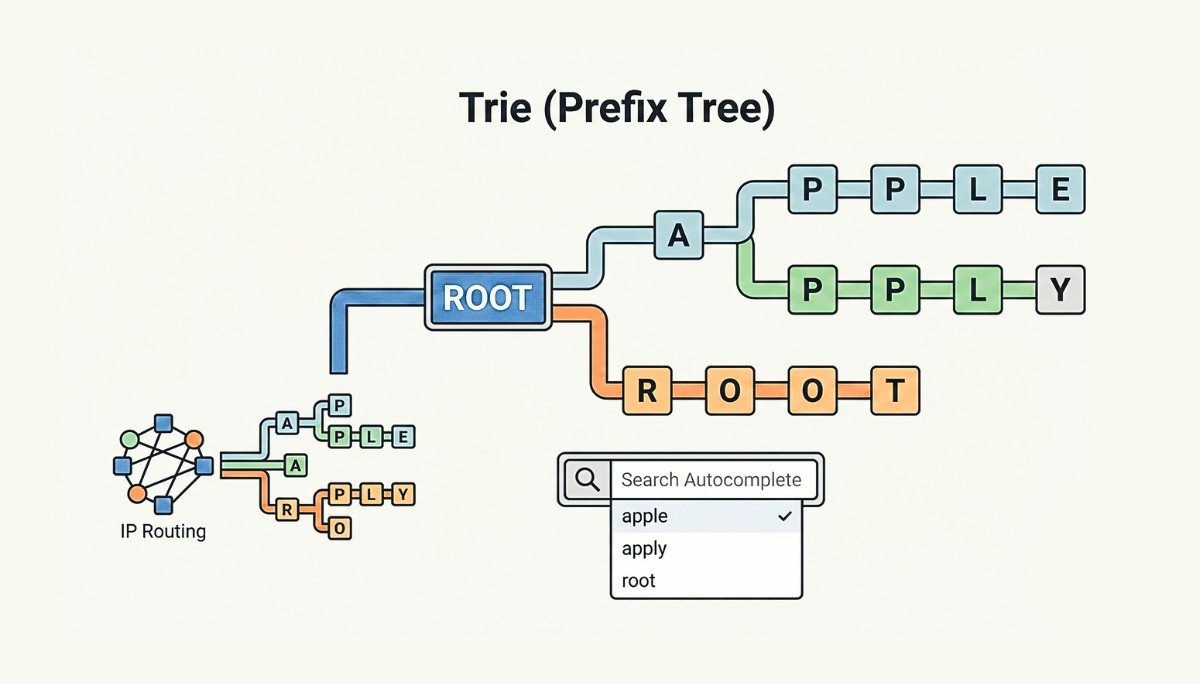Natural Language Processing with Python: A Beginner-Friendly Guide
By
Ethan Fahey
•
Aug 11, 2025
Python natural language processing (NLP) is revolutionizing how we interact with technology by enabling machines to understand and generate human language. This article will guide you through the essential tools and techniques needed to perform NLP tasks using Python. From setting up your environment to mastering data preprocessing, tokenization, and sentiment analysis, you’ll find everything you need to start leveraging the power of NLP in Python. And with Fonzi AI, you can go one step further, connecting with top-tier NLP talent or engineers experienced in Python-based solutions to bring these capabilities into your business projects faster and more effectively.
Key Takeaways
Natural Language Processing (NLP) enables machines to understand and generate human languages, utilizing techniques such as tokenization, data preprocessing, and sentiment analysis.
Python is favored for NLP tasks due to its simplicity and extensive libraries, such as NLTK, spaCy, and TextBlob, which support various NLP functionalities.
Effective evaluation of NLP models involves metrics like accuracy, precision, recall, and F1 score, alongside ensuring high-quality data labeling for reliable algorithm performance.
Understanding Natural Language Processing (NLP)

Natural Language Processing, or NLP, is a field within artificial intelligence and computer science. It allows machines to comprehend and work with human languages. The primary goal of NLP is to enable computers to comprehend and generate human language, thereby transforming the way we interact with technology.
NLP involves a series of phases that work together to process and interpret language. These phases include understanding, interpreting, and generating human language, and they are essential for various NLP tasks such as chatbots, voice assistants, sentiment analysis, and text classification. Organizations are increasingly interested in NLP technologies as they provide valuable insights and solutions for language-related consumer problems.
Approaches in NLP can be categorized into rule-based and statistical methods, with the latter leveraging machine learning models for analyzing large datasets. This combination of techniques allows NLP to enhance technology interaction by transforming how we understand and interact with data.
In conclusion, natural language processing is a powerful tool that bridges the gap between human language and machine translation understanding.
Setting Up Python for NLP

Python is a popular choice for NLP tasks due to its simple syntax, clear semantics, and a vast ecosystem of libraries and frameworks. To get started with NLP in the Python programming language, you need to download the latest version of Python from the official website appropriate for your operating system. Using an integrated development environment (IDE) like PyCharm or Visual Studio Code is recommended for efficient project development.
A package manager like pip simplifies the installation and management of Python libraries needed for NLP. Essential libraries include the Natural Language Toolkit (NLTK), TextBlob, and spaCy. For example, to install NLTK, you can use the command
pip install nltk
and for TextBlob,
pip install textblob
After installing spaCy, remember to download the necessary language model using the command
python -m spacy download en_core_web_sm
Setting up your Python environment correctly is crucial for the smooth execution of NLP projects. Following these steps will prepare you for various NLP tasks and techniques, making your journey into natural language processing a beginner’s guide that is both efficient and enjoyable.
Data Preprocessing Techniques
Data preprocessing is a crucial first step in natural language processing, as it transforms unstructured text into a format suitable for analysis. One of the essential preprocessing steps is tokenization, which breaks down text into smaller units like words or sentences. NLTK offers various tokenizers, including tools for sentence and word tokenization, catering to different text processing needs.
Effective text preprocessing also involves normalization techniques like removing extra spaces and converting text to lowercase to ensure uniformity. Handling unstructured data, such as medical records or social media posts, requires careful preprocessing to enhance the accuracy of subsequent NLP tasks like text classification and topic modeling.
Mastering these preprocessing techniques can significantly improve the performance of NLP models.
Tokenization: Breaking Down Text
Tokenization is the process of splitting text into smaller units, such as words or sentences, for analysis. This step is fundamental in natural language processing as it transforms human-readable text into discrete elements that machines can process. Tokenizing by word helps identify frequently occurring words, which are key units of meaning in text analysis.
In Python, the Natural Language Toolkit (NLTK) provides a popular method for tokenization using the word_tokenize function. This function efficiently breaks down text into individual words, making it easier to perform various NLP tasks like sentiment analysis, text classification, and information extraction.
Mastering tokenization lays a strong foundation for more advanced NLP techniques.
Stop Words Removal
Stop words are common words that provide minimal meaning and can be removed to improve model performance in natural language processing. These words, such as ‘to’, ‘in’, and ‘for’, are often filtered out during text preprocessing to focus on more significant terms, including distinct words. Removing stop words helps reduce the dimensionality of text data and enhances the accuracy of NLP models.
Libraries like NLTK and spaCy facilitate the process of removing stop words in Python. In NLTK, you can use the stopwords module to filter out common words using a for loop or list comprehension.
However, it’s essential to be cautious while removing stop words, as filtering out words like ‘not’ can affect the overall meaning of the text. Effectively removing stop words streamlines text data for better analysis and model performance.
Stemming and Lemmatization
Stemming and lemmatization are crucial techniques in natural language processing for reducing words to their root form:
Stemming involves trimming words to their base form, often resulting in non-words.
Lemmatization reduces words to their base form while ensuring the result is a valid word in the language.
NLTK uses the Porter stemming algorithm for stemming tasks, which helps find variant forms of a word.
Although stemming is typically faster due to its simpler algorithmic approach, lemmatization always produces proper English words, making it more suitable for tasks requiring linguistic accuracy. For instance:
Stemming is faster because of its simpler algorithmic approach.
Lemmatization produces proper English words.
Example: Treating ‘worst’ as an adjective during lemmatization yields ‘bad’.
Implementing stemming and lemmatization using NLTK’s PorterStemmer and WordNetLemmatizer can significantly enhance text preprocessing and analysis.
Part-of-Speech Tagging
Part-of-speech tagging, or POS tagging, is the process of attaching grammatical roles to words in a sentence. This technique is essential for understanding the linguistic structure of text, as it helps identify the roles words play in sentences. Homonyms can be tagged differently based on their usage, showcasing the importance of context in POS tagging and the significance of a particular word, as well as the relevance of dependency parsing.
NLTK provides various corpora with predefined part-of-speech tags that can be accessed using its corpus interface. The pos_tag function in NLTK is used to attach part-of-speech tags to each word in a text after tokenization, representing each tagged token as a tuple consisting of the word and its corresponding tag.
Mastering POS tagging provides deeper insights into the grammatical structure and meaning of text, enhancing NLP capabilities.
Named Entity Recognition (NER)
Named Entity Recognition (NER) aims to extract entities from text and categorize them into predefined classes such as person names, organizations, and locations. Named entities are noun phrases that refer to specific locations, people, and organizations, making NER a crucial task in natural language processing. Noun phrase extraction helps in information extraction and understanding the context of the text. Identifying named entities helps in information extraction and understanding the context of the text.
NLTK provides tools like ne_chunk to simplify the process of identifying named entities in text. To recognize named entities, the nltk.ne_chunk() function is used, with the option to set the binary=True parameter to indicate that named entities won’t be labeled more specifically. Mastering NER enhances text analysis and provides valuable insights from the data.
Sentiment Analysis

Sentiment analysis involves identifying the emotional tone within a text. It is a method used to gauge feelings conveyed through written content. The goal is to classify opinions expressed in text as positive, negative, or neutral, making it a valuable tool for understanding customer feedback, social media posts, and product reviews. NLTK offers a simple interface for performing sentiment analysis and analyzing text, making it accessible for beginners.
The SentimentIntensityAnalyzer
The class in NLTK specifically designed for sentiment analysis evaluates the sentiment of various types of sentences, including those with humor, sarcasm, or mixed feelings. It provides four output scores indicating the emotional stance of the text:
Compound
Negative
Neutral
Positive sentiment
Mastering sentiment analysis provides valuable insights into the emotional tone of text data, enabling informed decisions based on the analysis.
Topic Modeling
Topic modeling is a technique used to discover the underlying themes or topics in a collection of documents. Latent Dirichlet Allocation (LDA) is a widely used technique for topic modeling in NLP. It is effective in identifying topics within large texts. LDA categorizes documents into topics and keywords, making it useful for content recommendation and automated categorization.
Gensim is a popular library used for topic modeling and semantic similarity identification. The print_topics method in Gensim is used to display topics and associated words after training an LDA model.
Document clustering aims to group similar documents based on content, helping to identify key themes and improve text analysis. Mastering topic modeling allows for effective analysis of large text volumes and the uncovering of hidden patterns.
Text Representation Techniques
Text representation techniques in NLP aim to convert textual data into numerical vectors for analysis. Text normalization is an essential step that reduces variability and improves data consistency by removing extra spaces and converting text to lowercase. The Bag-of-Words model represents text by treating each word as a feature in a vector, disregarding the order and meaning of words.
However, Bag-of-Words can lead to high-dimensional, sparse vectors, making it less suitable for complex tasks. TF-IDF (Term Frequency-Inverse Document Frequency) improves upon Bag-of-Words by weighing words based on their frequency in a document and rarity in the entire dataset.
TF-IDF is preferred for tasks like document retrieval or spam detection, where identifying significant terms is crucial. Mastering these text representation techniques enhances text analysis and improves NLP model performance.
Advanced Text Embedding Techniques
Advanced text embedding methods are crucial for capturing semantic relationships between words, enhancing machines’ comprehension of language context and meaning. Word embeddings are numerical representations that capture both semantic and syntactic information about words in a lower-dimensional space. Word2Vec offers two primary architectures: Continuous Bag of Words (CBOW) and Skip-Gram, each focusing on predicting words from context and vice versa.
FastText improves upon Word2Vec by incorporating character n-grams, enabling it to generate embeddings for out-of-vocabulary words. BERT provides contextualized embeddings by analyzing both left and right contexts of words, enhancing the understanding of nuanced word meanings.
Pre-trained embeddings like GloVe leverage global word co-occurrence statistics to capture semantic relationships across a vast corpus. Mastering advanced text embedding techniques significantly improves the accuracy and performance of deep learning NLP models.
Evaluating NLP Models
Evaluating NLP models is essential to ensure their effectiveness and reliability. Common evaluation metrics include:
Accuracy
Precision
Recall
F1 score.
These metrics provide insights into the model’s performance in various tasks. For example, the performance of Latent Dirichlet Allocation (LDA) can be assessed using:
Model perplexity
Coherence scores.
These measures evaluate how well the model has captured the underlying topics.
Quality data labeling is crucial for training effective NLP models, as it directly impacts the accuracy and performance of the algorithms. Using a blend of automated and human labeling is recommended to handle edge cases and ensure high data quality.
Visualization tools like pyLDAvis help illustrate the distribution of topics and associated keywords, making it easier to interpret the results of topic modeling. Mastering these evaluation techniques ensures NLP models are accurate and reliable, despite the learning curve involved.
Real-World Applications of NLP

Natural Language Processing (NLP) is integral to many daily technologies, including chatbots, voice assistants, and search engines. Conversational AI utilizes NLP for customer service by enabling chatbots to understand user intent and generate human-like responses, often leveraging a chat corpus. In finance, NLP is used for analyzing earnings calls and financial documents to gauge market sentiment and inform trading strategies.
Healthcare applications of NLP include analyzing patient records to streamline clinical decision-making and improve treatment recommendations. Automated text summarization employs techniques to extract key information or generate new content that conveys original meanings.
NLP tools also assist in resume evaluations by automatically extracting qualifications and matching them to job requirements, optimizing the hiring process. Understanding these real-world applications highlights the transformative impact of NLP on various industries.
Popular NLP Libraries in Python

Popular NLP libraries in Python include:
NLTK: supports various NLP tasks such as classification, stemming, tagging, parsing, semantic reasoning, and tokenization.
spaCy: known for its production-readiness and features the fastest syntactic parser available.
TextBlob
Gensim
Hugging Face.
Some popular NLP tools include:
Hugging Face: provides access to over 20,000 pre-trained models, making it a powerful resource for diverse NLP applications.
TextBlob: simplifies basic NLP tasks like sentiment analysis and part-of-speech tagging for beginners.
Polyglot: supports multilingual named entity recognition and morphological analysis for over 130 languages.
Exploring these Python libraries allows you to choose the right tools for NLP projects and enhance language processing with Python capabilities.
Best Practices for NLP Projects
Best practices for managing NLP projects help ensure effective and efficient development from data collection to deployment. Installing NLTK in a virtual environment is recommended to avoid dependency conflicts and maintain a clean workspace. Clear communication with your data labeling team can significantly enhance the efficiency and accuracy of the labeling process.
A managed workforce approach can offer scalability and consistency in labeling efforts, which is vital for long-term NLP project success. Following these best practices streamlines NLP projects and achieves high-quality outcomes, ensuring accurate and reliable model performance.
Summary
Mastering Natural Language Processing (NLP) with Python opens up a world of possibilities in understanding and generating human language. From setting up your Python environment to advanced text embedding techniques, this guide has covered essential tools and techniques to help you get started and excel in various NLP tasks. By following best practices and leveraging popular NLP libraries, you can build robust applications that make sense of textual data and provide valuable insights.
As you dive deeper into NLP, keep in mind that it’s a fast-moving field with new tools, techniques, and breakthroughs emerging all the time. Staying curious, experimenting with fresh ideas, and tapping into the wealth of available resources will keep you ahead of the curve. Whether you’re building chatbots, running sentiment analysis, or developing text classification models, the skills you’ve built give you the power to create impactful, real-world AI solutions. And with Fonzi AI, you can amplify that impact, whether by connecting with expert NLP engineers or finding the right AI talent to bring cutting-edge projects to life in your business.




